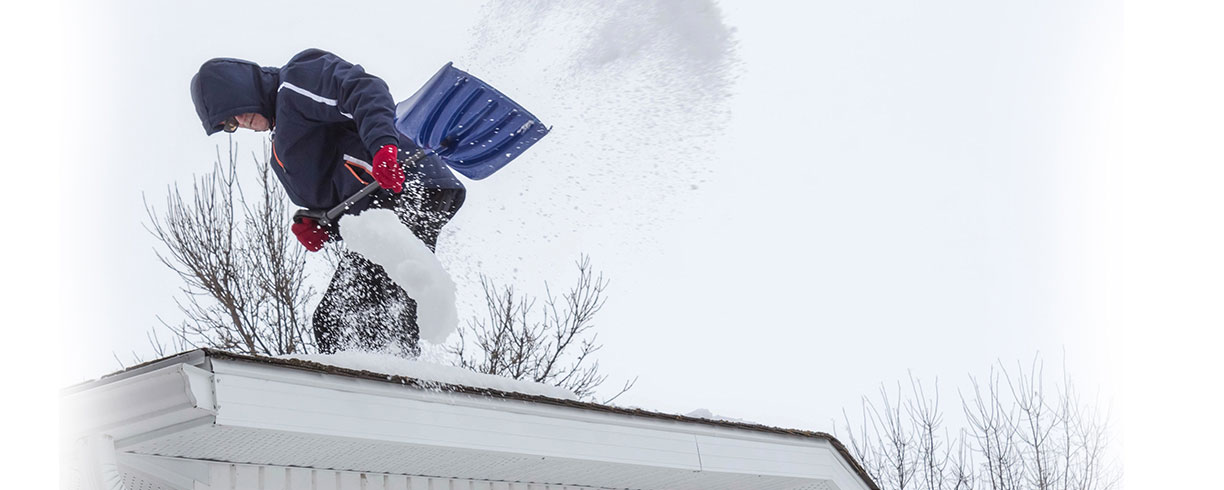Roofs in Quebec are built to withstand our harsh winter conditions. However, when there are unusually high snow or ice accumulations, homeowners are left with no other option but to clear the snow from their roof.
Roofs in Quebec are built to withstand our harsh winter conditions. However, when there are unusually high snow or ice accumulations, homeowners are left with no other option but to clear the snow from their roof.
It is highly recommended that you entrust the job to a roofing specialist who has the required skills, experience and equipment. If you decide to remove snow from your roof by yourself, use the following safety tips:
- Never work alone: there should be someone nearby to come to your rescue, if necessary.
- Whatever physical conditions you’re in, take a few minutes to warm up your body before you start working.
- Your safest bet is to remove the snow while on the ground using a roof rake with a telescopic handle. Sometimes you need only to remove snow and icicles accumulated on the edge of the roof to fix the problem.
- If necessary to get on the roof, you should plant your ladder in a pile of snow. At the very least, make sure your ladder is stable and free of ice.
- It is imperative that you take precautions against falls. Use a safety harness fastened to a strong anchor point, such as the chimney.
- Make sure to use only plastic shovels for removing snow from a roof as metal tools with sharp or cutting edges can cause major damage to your roof.
- Do not undertake to remove every last snowflake! It is important to leave a layer of snow of about 10 to 15 cm to prevent damage to the waterproofing membrane.
- Make sure no pedestrian can be hit by snow being thrown off the roof. If necessary, mark the area using a barrier or “danger” signs.
- Once you’re done clearing the snow, don’t go jumping off the roof into a snow pile! You could get severely injured by falling onto a pole, a piece of ice or any forgotten item.
There are several signs indicating that the snow load is excessive and becoming dangerous: cracks appearing in interior walls, doors starting to rub or jam, unusual cracking sounds or warping of a ceiling are all warnings of an overloaded roof that needs to be cleared of snow. To avoid major structural damage to your house, you should remain vigilant, especially when snow begins to melt and gets heavier.

























